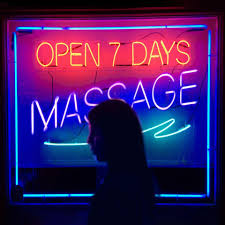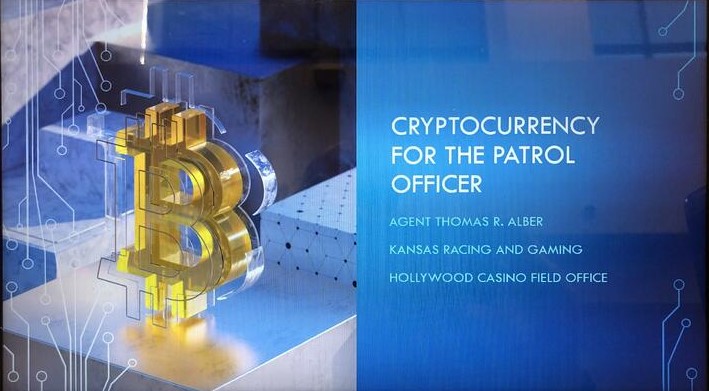Human trafficking is a grievous crime affecting millions worldwide, and illicit massage parlors (IMPs) are a significant component of this dark underworld. The connection between human trafficking and IMPs is alarmingly evident, as these establishments often serve as fronts for sex trafficking operations. Victims, predominantly women from foreign countries, are lured with promises of legitimate work and a better life, only to find themselves trapped in exploitative conditions. The role of Chinese organized crime in facilitating and profiting from these illicit activities further complicates efforts to combat this pervasive issue.
Connection Between Human Trafficking and Illicit Massage Parlors
Illicit massage parlors operate under the guise of providing legitimate massage services, but in reality, they function as centers for sexual exploitation. Traffickers use various coercive tactics to control their victims, including physical violence, psychological manipulation, and debt bondage. According to a Polaris report, out of 9,000 reported cases of human trafficking in the United States in 2017, over 2,000 involved illicit massage businesses (IMBs). These parlors are typically part of larger organized crime networks that facilitate the recruitment, transportation, and exploitation of victims.
Chinese Organized Crime’s Involvement and Structure in the United States
Chinese organized crime syndicates are deeply entrenched in the operation of IMPs across the United States. These syndicates are highly organized and operate through a well-structured network that includes recruiters, transporters, and enforcers. The following elements illustrate their involvement and structure:
1. Recruitment: Victims are often recruited from rural areas in China and other Asian countries through deceptive advertisements promising legitimate jobs in the United States, such as waitressing, domestic work, or even legitimate massage therapy. Recruiters may use social media, job boards, or word of mouth to find potential victims. In many cases, victims are charged exorbitant recruitment fees, leading them to incur significant debt, which traffickers use to control them.
2. Transportation: Once recruited, victims are transported to the United States using falsified travel documents or through legal channels, such as tourist or student visas obtained under false pretenses. Traffickers often arrange complex travel itineraries to avoid detection, and victims may pass through several countries before arriving in the U.S.
3. Control and Exploitation: Upon arrival, victims are stripped of their passports and identification documents, making it difficult for them to escape or seek help. They are housed in cramped, unsanitary conditions, often within the same premises as the massage parlors. Traffickers use physical violence, threats, and psychological manipulation to control the victims. They may threaten harm to the victims’ families back home, further ensuring compliance.
4. Financial Exploitation: Victims are forced to work long hours providing sexual services, and the money they earn is taken by their traffickers. The traffickers often impose additional charges for “living expenses,” “protection,” or “immigration fees,” ensuring that victims remain in perpetual debt bondage. The revenue generated from these activities is laundered through various financial channels, including real estate investments and shell companies.
Recent Examples and Statistics
Recent law enforcement actions have highlighted the scale and brutality of trafficking operations in illicit massage parlors. In February 2019, a major bust in Florida uncovered a sprawling network of IMPs linked to sex trafficking. The investigation, which led to the arrest of numerous individuals including high-profile businessmen, revealed that women were being held in deplorable conditions, forced to service clients around the clock.
In 2020, a report by Polaris detailed that nearly 2,000 suspected illicit massage businesses were operating in the U.S., with revenue estimates reaching billions of dollars annually. The report emphasized that these operations are not only local but often involve transnational crime syndicates, including those based in China.
Case Example from the Midwest
In October 2021, and again in June of 2022, a major human trafficking ring operating through illicit massage parlors was dismantled in the Midwest, specifically in Kansas and Missouri. The operation, led by Chinese organized crime syndicates, had trafficked women from China and other Asian countries into the United States. These women were promised legitimate jobs but were instead forced into sexual slavery.
The investigation revealed that the victims were housed in squalid conditions and subjected to extreme psychological and physical abuse. The traffickers used sophisticated methods to avoid detection, including frequently moving the victims between different parlors in various states. This operation was brought down through the coordinated efforts of local and federal law enforcement agencies, highlighting the importance of collaboration in combating such crimes.
Personal Stories of Survivors
The personal stories of survivors reveal the harrowing experiences faced by those trafficked through IMPs. One survivor, Mei, was promised a job as a waitress in the United States but was instead forced to work in a massage parlor in New York. She was made to live in cramped, unsanitary conditions, and coerced into providing sexual services to numerous clients daily. Mei’s traffickers confiscated her identification documents and threatened her with violence if she attempted to escape or contact authorities.
Another survivor, Saanvi, came to the U.S. from India on a student visa, hoping to earn money for her family. She was tricked into working at a massage parlor in California, where she was subjected to physical and sexual abuse. Saanvi managed to escape with the help of a client who noticed her distress and contacted local authorities. Her courage and the intervention of law enforcement led to the dismantling of the trafficking ring that had enslaved her.
Efforts by Law Enforcement and Non-Profits to Combat This Issue
Efforts to combat human trafficking in illicit massage parlors involve coordinated actions by law enforcement agencies and non-profit organizations. Law enforcement plays a crucial role in investigating and prosecuting traffickers, as well as rescuing victims. Multi-agency task forces, such as the Human Trafficking Prosecution Unit (HTPU) and the Federal Bureau of Investigation (FBI), focus on dismantling trafficking networks and providing support to survivors.
The U.S. Crypto Cop website provides valuable resources and training for law enforcement officers to recognize and combat human trafficking and related financial crimes. Training sessions focus on understanding how illicit massage parlors operate, recognizing the signs of trafficking, and using financial investigations to dismantle trafficking operations. These educational efforts are essential in equipping officers with the tools needed to address this pervasive issue.
Non-profit organizations are equally vital in this fight, offering essential services to survivors, including shelter, legal assistance, medical care, and counseling. Polaris, an anti-trafficking organization, operates the National Human Trafficking Hotline, which receives tips and provides resources to victims and communities. Their comprehensive reports and data collection efforts help shape policies and strategies to address trafficking in IMPs.
Community awareness and education are also critical components of combating human trafficking. Organizations like the Coalition to Abolish Slavery and Trafficking (CAST) conduct outreach programs to educate the public about the signs of trafficking and how to report suspicious activities. These initiatives empower individuals to act against trafficking in their communities and support efforts to bring traffickers to justice.
The connection between human trafficking and illicit massage parlors is a tragic reality that requires ongoing attention and action. The involvement of Chinese organized crime syndicates adds a layer of complexity to this issue, necessitating robust international cooperation and comprehensive strategies. The personal stories of survivors highlight the severe impact of this crime on individuals and underscore the importance of a collective response. Through the combined efforts of law enforcement, non-profits, and community members, progress can be made in dismantling trafficking networks and providing support to those affected. Continued vigilance, education, and advocacy are essential in the ongoing battle against human trafficking in illicit massage parlors.
References for Further Study:
1. Polaris. (2018). Human Trafficking in Illicit Massage Businesses. https://polarisproject.org/resources/human-trafficking-illicit-massage-businesses/.
2. PBS Frontline. (2019). Sex Trafficking in America: Mei’s Story. https://www.pbs.org/wgbh/frontline/article/sex-trafficking-in-america-meis-story/.
3. NBC News. (2017). Indian Student Rescued from Massage Parlor Trafficking Ring. https://www.nbcnews.com/news/us-news/indian-student-rescued-massage-parlor-trafficking-ring-n781176.
4. Department of Justice. (2020). Human Trafficking Prosecution Unit. https://www.justice.gov/criminal-ceos/human-trafficking-prosecution-unit-htpu.
5. Polaris. (2021). National Human Trafficking Hotline Statistics. https://polarisproject.org/national-human-trafficking-hotline-statistics/.
6. U.S. Crypto Cop. (2023). Navigating the Nexus: Exploring the Intersection of Chinese Organized Crime, Crypto Crime, and Illicit Massage Parlors. Retrieved from https://www.USCryptoCop.com.
7. CAST. (2022). Community Outreach and Education Programs. Retrieved from https://www.castla.org/community-outreach-and-education/.
#USCryptoCop


